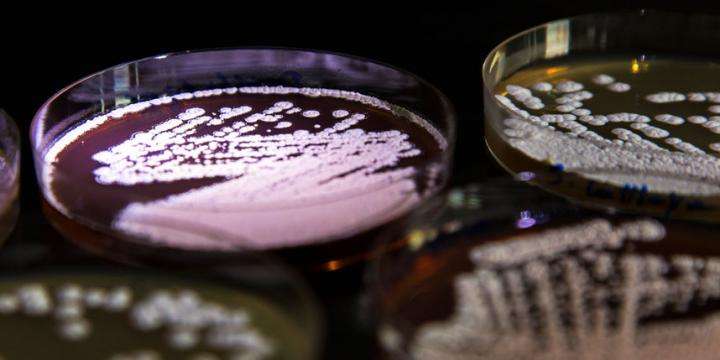Scientists solve 30-year old mystery on how resistance genes spread

To win the war against antibiotic-resistant superbugs, scientists seek the origin of resistance genes to identify how they are introduced to disease-causing bacteria. Identifying the origin of resistance genes and how they spread is comparable to finding patient zero in an outbreak, which is not an easy task.
For more than 30 years, scientists have proposed that resistance genes actually originate from the microorganisms producing the antibiotic. However, scientists have not been able to find direct proof of this transfer.
Now, research conducted at the Technical University of Denmark shows that antibiotic resistance genes originate from the same place as the antibiotic compounds, i.e. from a group of soil bacteria called Actinobacteria. The study is published in Nature Communications.
More than three-fourths of all current antibiotics used to treat human infections are produced by Actinobacteria, which also carry antibiotic resistance genes. In these experiments, the researchers surprisingly found that many resistance genes in disease-causing microbes (gram negative pathogens) were very similar to resistance genes found in Actinobacteria. In one case, the genes were 100 percent identical.
"It has been suspected that pathogens can obtain resistance genes from Actinobacteria for half a century. The 100 percent identical genes are the smoking gun," says postdoc Xinglin Jiang from DTU Biosustain.
Gram negative pathogens constitute a large group of species, among which are pseudomonas, which can cause lung and urinary tract infections.
At first, it was difficult to imagine how pathogens could acquire genes from Actinobacteria, because they are so different and unrelated to each other. But by investigating the DNA sequence around the resistance genes, the team figured out how the transfer occurred through a new mechanism called "carry back", in which the pathogen basically has a primitive form of "sex" with the Actinobacterium and acquires its resistance genes after it dies.
This gene transfer by carry back could, in principle, happen when pathogens come into contact with Actinobacteria, like in an animal farm or in soil polluted with untreated hospital waste. In this way, the pathogen can become resistant and endanger human lives in the next round of infection.
Understanding the origin is therefore key to counteracting the spread of antibiotic resistance, explains senior researcher Tilmann Weber from DTU Biosustain: "We can't stop this gene transfer, but when you know which resistance genes pathogens may harbor, you can personalize the antibiotic treatment. Also, with this knowledge, you can try to develop new antibiotics with other properties that the pathogens don't have a defense against."
Here is how the carry back process works:
1. The Gram negative pathogen injects its DNA into the Actinobacteria. Gram negative bacteria naturally have an ability called conjugation by which bacterial cells can inject their own DNA into other bacterial cells. It is called the bacterial equivalent of sex, because it is usually used to exchange gene information between Gram negative bacteria. But sometimes Gram negative bacteria can also use this mechanism to inject DNA into unrelated Gram positive bacteria like Actinobacteria.
2. Inside the Actinobacteria, the injected DNA recombines with the host's DNA containing resistance genes. After the Actinobacterium dies, the recombinant DNA is released into the environment.
3. Lastly, the injected DNA can act as "gluing DNA" and mediate the uptake of the resistance gene back to the pathogens through a phenomenon called natural transformation.
More information: Xinglin Jiang et al, Dissemination of antibiotic resistance genes from antibiotic producers to pathogens, Nature Communications (2017).
Journal information: Nature Communications
Provided by Technical University of Denmark

















